
Brownston House (or Brownstone House) [1] is a Grade I listed building on New Park Street, Devizes, Wiltshire, England, dating from the beginning of the 18th century. It is a Grade I listed building.

Brownston House (or Brownstone House) [1] is a Grade I listed building on New Park Street, Devizes, Wiltshire, England, dating from the beginning of the 18th century. It is a Grade I listed building.
Built of dark rubbed brickwork of fine quality, the house has two storeys and an attic and basement. [1] The wide symmetrical front has a three bay central projection. There is a stone plinth, chamfered stone quoins, and an elaborate stone cornice. The central main entrance has a tall eight-panel door in a plain frame with a stone surround. The hipped roof is of old tiles, and has three dormer windows, and the house has square brick chimneys with stone quoins. [2]
The house was designated as Grade I listed in 1972. [1]
The house was built about the year 1700 [1] for Francis Merewether of Devizes and Easterton, who was High Sheriff of Wiltshire for 1700. He was Member of Parliament for Devizes in 1701 and again from 1703 to 1705. [2]
In 1720 the house was occupied by Thomas Browne, a barrister, who made additions in Bath stone to give the house its present form. His initials are on the heads of the rainwater pipes. He was still living there in 1736. [2]
The house was in the possession of members of the Garth family from about 1740 to 1779. John Garth (1701–1764) was Member of Parliament for Devizes in 1740 and continued to serve until his death in 1764. He was the son of Colonel Thomas Garth by his marriage to Elizabeth Colleton, a granddaughter of Sir John Colleton, 1st Baronet, one of the proprietors of South Carolina. Garth's wife Rebecca Brompton was the granddaughter of Sir Richard Raynsford, Chief Justice of the King's Bench. Their son Thomas Garth became a general of the British Army and an Equerry to George III. Their son Charles Garth was a barrister and another Member of Parliament for Devizes. Before that, he was successively Crown Agent for South Carolina, Georgia and Maryland. On his father's death Charles succeeded him as a Member of Parliament for Devizes for sixteen years, between 1764 and 1780, and Brownston House was his Devizes home from 1764 to about 1779. By 1780, Charles Garth had moved permanently to Walthamstow, near London. [2]
Wadham Locke and his wife Anne Sutton moved into Brownston House soon after their wedding early in 1779. He was an attorney and a banker. Their son, another Wadham Locke (1779–1833), later a Member of Parliament, was born in the house in October 1779 and married the heiress Anna Maria Powell in Salisbury in 1802. [2]
Charles Trinder (born 1794), a surgeon, and surgeon to Devizes Prison (the 'County House of Corrections'), was living at Brownston House by 1839, and in 1841 was there with his Ellen. Their daughter Frances was born in the house in 1842. [2]
The Misses Bidwells' Ladies Boarding School, sometimes called a Seminary, occupied Brownston House from 1859 to 1901. From 1901 until about 1929 or later the house was occupied by the two unmarried daughters of Henry S. Hilman, a barrister of Kent, Worcestershire, and Kensington, who had died in 1893. Architectural plans for 'alterations and additions' to Brownston House by the architect Harold Brakspear drawn up in December 1901 are preserved in the Wiltshire and Swindon Archives. Miss Bertha M. Hilman was still living in the house in December 1928, after the death of her sister, but she died in 1929. The house then became a nurses' hostel for the Devizes and District Hospital. When no longer required for this purpose, it fell into disrepair and was bought by Kennet District Council, which undertook a programme of restoration and repair. After that, it was used as a doctor's surgery and as offices for Wiltshire County Council's Social Services department, until being sold by Kennet in 2000 to a company called Renelec, plumbing & heating engineers, to be used once again as offices. [2]

Wiltshire is a historic and ceremonial county in South West England with an area of 3,485 km2. It is landlocked and borders the counties of Dorset to the southwest, Somerset to the west, Hampshire to the southeast, Gloucestershire to the north, Oxfordshire to the northeast and Berkshire to the east. The county town was originally Wilton, after which the county is named, but Wiltshire Council is now based in the county town of Trowbridge. Within the ceremonial county's boundary are two unitary authority areas, Wiltshire and Swindon, governed respectively by Wiltshire Council and Swindon Borough Council.

Avebury is a village and civil parish in Wiltshire, England. The village is about 5.5 miles (9 km) west of Marlborough and 8 miles (13 km) northeast of Devizes. Much of the village is encircled by the prehistoric monument complex also known as Avebury. The parish also includes the small villages of Avebury Trusloe and Beckhampton, and the hamlet of West Kennett.

Marlborough is a market town and civil parish in the English county of Wiltshire on the Old Bath Road, the old main road from London to Bath. The town is on the River Kennet, 24 miles (39 km) north of Salisbury and 10 miles (16 km) southeast of Swindon.

Devizes is a market town and civil parish in Wiltshire, England. It developed around Devizes Castle, an 11th-century Norman castle, and received a charter in 1141. The castle was besieged during the Anarchy, a 12th-century civil war between Stephen of England and Empress Matilda, and again during the English Civil War when the Cavaliers lifted the siege at the Battle of Roundway Down. Devizes remained under Royalist control until 1645, when Oliver Cromwell attacked and forced the Royalists to surrender. The castle was destroyed in 1648 on the orders of Parliament, and today little remains of it.

Great Bedwyn is a village and civil parish in east Wiltshire, England. The village is on the River Dun about 4.5 miles (7.2 km) southwest of Hungerford, 14 miles (23 km) southeast of Swindon and 6 miles (9.7 km) southeast of Marlborough.

Alton is a civil parish in Wiltshire, England. The parish includes the adjacent villages of Alton Barnes and Alton Priors, and the nearby hamlet of Honeystreet on the Kennet and Avon Canal. It lies in the Vale of Pewsey about 6 miles (10 km) east of Devizes.

Wiltshire County Council was the county council of Wiltshire in the South West of England, an elected local Government body responsible for most local government services in the county.

Devizes is a constituency in Wiltshire, England, represented in the House of Commons of the UK Parliament since 2019 by Danny Kruger, a Conservative.
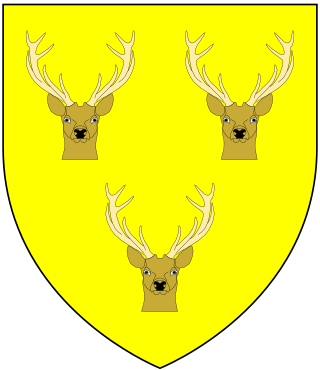
Sir John Colleton, 1st Baronet (1608–1666) served King Charles I during the English Civil War. He rose through the Royalist ranks during the conflict, but later had his land-holdings seized when the Cavaliers were finally defeated by Parliamentary forces. Following the Restoration of the Monarchy in 1660, he was one of eight individuals rewarded with grants of land in Carolina by King Charles II for having supported his efforts to regain the throne.
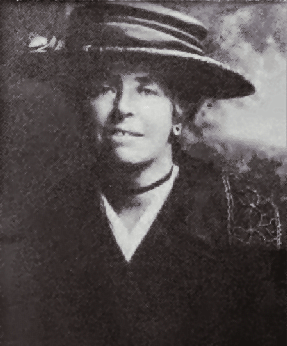
Maud Edith Cunnington was a Welsh archaeologist, best known for her pioneering work on the some of the most important prehistoric sites of Salisbury Plain.
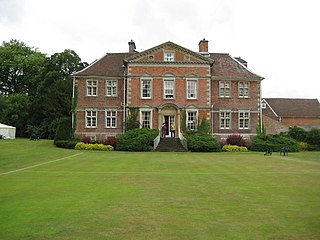
Urchfont Manor is a manor house near the village of Urchfont in Wiltshire, England, about 3+1⁄2 miles (6 km) southeast of the market town of Devizes.

Ashton Gifford House is a Grade II listed country house in the hamlet of Ashton Gifford, part of the civil parish of Codford in the English county of Wiltshire. Ashton Gifford House is mentioned in the Wiltshire edition of the Pevsner Architectural Guides. The house was built during the early 19th century, following the precepts of Georgian architecture, and its estate eventually included all of the hamlet or tithing of Ashton Gifford. The house sits in the Wylye valley, part of the Cranborne Chase Area of Outstanding Natural Beauty.
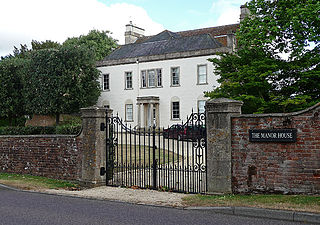
Seend is a village and civil parish about 3 miles (5 km) southeast of the market town of Melksham, Wiltshire, England. It lies about 3.5 miles (6 km) west of Devizes and 5.5 miles (9 km) northeast of the county town of Trowbridge. The parish includes the sub-village of Seend Cleeve and the hamlets of Inmarsh, Martinslade, Seend Head, Sells Green and The Stocks.
Charles Garth, was a British Member of Parliament (MP) and Colonial Agent in pre-revolutionary America.
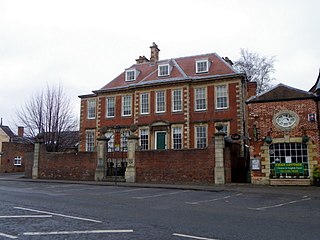
John Garth, of Garth House, Devizes, Wiltshire, was a British lawyer and Whig politician who sat in the House of Commons from 1740 to 1764.

Roundway is a hamlet and former civil parish adjacent to Devizes in the English county of Wiltshire. The hamlet lies about 1+1⁄4 miles (2.0 km) northeast of Devizes town centre.

Sir Edward Ernle, 3rd Baronet of Charborough in Dorset, of Brimslade Park and Etchilhampton, both in Wiltshire, was an English Whig politician who sat in the English and British House of Commons between 1695 and 1729. He had mixed fortunes in finding or holding a seat and often depended on his father-in-law to bring him into his own seat at Wareham when a vacancy arose.

Wadham Locke (1779–1835) was an English banker and politician.

William Wyndham JP DL (1796–1862), sometimes numbered William Wyndham V, was a Wiltshire landowner and Member of Parliament.

Thomas Evans Blackwell was an English civil engineer.